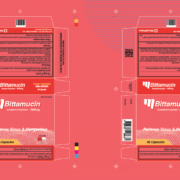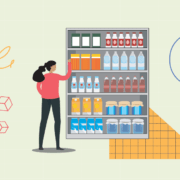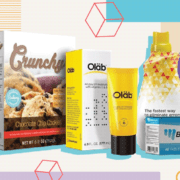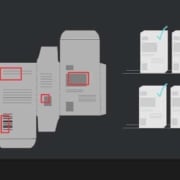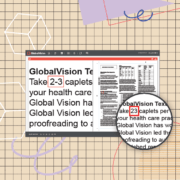The Competitive Advantage of Effective Packaging
Date: August, 2019 | Category: Proofreading | Author: Ryan Szporer
Effective packaging is multi-functional. At the bare minimum, packaging has to be able to adequately contain the product inside, but in cutthroat, performance-driven industries “good enough” rarely is.
Five Criteria for Competitive Packaging
To be successful, effective packaging should fill no fewer than five different criteria:
- Protect the product: which is most closely associated with what most would recognize as packaging’s primary function. However, product protection implies going a step further beyond simply encasing what’s inside. There’s a shelf-life-conservation element to it, to protect the product from outside elements too.
- Identify the brand: which is probably the next-most logical quality. A customer should know not just the nature of the product, but from which company they’re buying it. How else can a firm realistically expect a customer to know that they should buy their product?
- Protect the brand: this tends to go hand in hand with identifying the brand for the simple reason that built-up brand equity contributes to brand recognition. Packaging aesthetics that are “on-brand” further enable a customer to choose the right product from off the store shelf. And a marketing department must consistently stay on-brand to keep it from degrading.
Another key part of brand protection and effective packaging revolves around the increasing need to implement tamper-proof and anti-counterfeiting measures. Counterfeit consumer goods can be a liability, safety-wise, from the perspective of customers, as they’re lower in quality.
As a result, counterfeit products have a negative financial impact on the company whose product they’re counterfeiting. Counterfeiters don’t just try to capitalize on the established brands of successful companies and infringe on their profits. They eat away at the customer goodwill those brands have earned by selling inferior products.
- Possess product Information: any self-respecting packaging should include a description of what the consumer is purchasing, directions when applicable, and company contact information, all of which contribute to ease of use and a positive consumer impression. Even if clearly displaying the contact information seems like an invitation for customer complaints, the alternative is much worse. Making it difficult for customers to contact you is inviting negative publicity instead, even if the product itself is perfect in every other way.
- Contribute to the internal efficiency of the company: through a variety of factors, like true sustainability. Packaging should never be a drag on operations. There are always ways to improve on a good design from a cost-effectiveness standpoint, which ultimately helps companies’ bottom lines and can serve as a competitive advantage, especially when combined with the other criteria above.
Sustainability for Effective Packaging
For example, integrating sustainable packaging into your supply chain isn’t as difficult as it sounds. Plus, getting willingly on board with environmentally conscious trends now is better than being forced to later on, once legislation inevitably passes. Nevertheless, true sustainability doesn’t just refer to the materials that go into a design, but the lack of wasted resources. Increasing efficiency when it comes to proofreading is one way to improve overall efficiency.
One way is to automate your proofreading process, which has been proven to reduce the likelihood of errors slipping through like they would if the packaging were to be checked manually. Therein lies the popular misconception.
Many assume the effectiveness of good packaging is a direct result of how well it sells when it’s just as much about internal impact as it is about the external. There are undeniably ways to focus on making specific packaging aesthetics more of a competitive advantage to the point that it’s universally recognizable, even to a five-year-old. However, it’s not just about the end-user. It’s not all about the packaging the customer sees. It’s about the revisions everyone else sees too.
External vs. Internal Effective Packaging
There are admittedly many individual strategies to deploy to outwardly distinguish your packaging from that of your competitor, i.e., the “identify the brand” criteria at the very top. For example, to keep it simple from an aesthetics perspective and keep it dynamic when it comes to unboxing, so as to connect with the consumer on a deeper level. In fact, this could very well have been a blog post on the competitive advantage of effective packaging on those alone.
However, there are just as many strategies to improve internal efficiency when it comes to producing packaging. For instance, according to consulting firm Solutions Factory:
- Automation, as previously alluded to above.
- The standardization of processes to reduce throughput times.
- Optimal inventory management.
- Keeping up with technology and upgrading when financially feasible.
It would be easy to launch into a debate as to which aspect is more important than the other, between the external and internal. One cannot exist without the other, though. Without the packaging to produce, there would be no reason for the back end. And without the back end, there would be no packaging. They’re dependent on each other and neither one can be ignored.
It’s a matter of a company realizing each of the above criteria to the best of its ability and then realizing successful packaging isn’t just multi-functional. It’s a process that’s multi-faceted too.
_________________________________________________________________________________________
Get your complete guide to meeting FDA labeling requirements here
Learn how some of the world’s top pharma companies have cracked the efficiency code with automation



